This post is about making Sourdough Einkorn Loaves with different varieties of Einkorn Grains from three different sources.
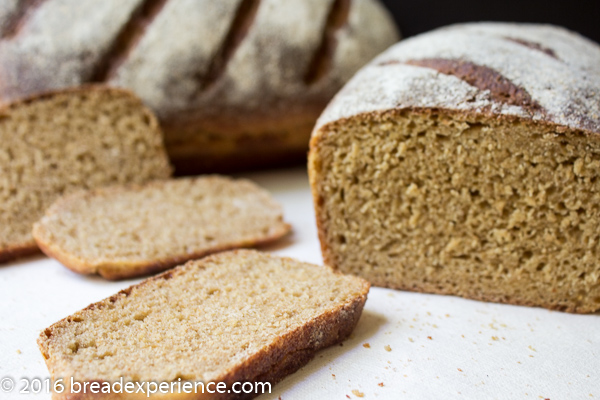
This is Part 2 in my series comparing different types of einkorn flour. Part 1 featured Einkorn Banana Bread made with two types of all-purpose Einkorn flour.
For this test, I used flour milled from three different types of einkorn grains to make 100% wholegrain einkorn loaves using natural yeast sourdough as the leavening.
I had perfected the formula for this einkorn sourdough over the summer when I made (20+) loaves to sell at a local farmer’s market. Even so, when I began this series of experiments, I was not quite up to par due to seasonal allergies, so some of my attempts didn’t turn out like I wanted. Over several weeks of testing and retesting, I ended up making 10 more loaves using this same formula.
Comparing the Grains
The grains that I compared for this experiment were from Einkorn.com, Jovial Foods, and Azure Farms. I started the experiments in September and tested for several weeks. I tried to keep the variables the same for each experiment; however, instead of making three loaves at the same time with three different types of flour, I chose to compare two loaves at a time. It was less confusing this way.
If you look closely at the photos below, you’ll notice that Jovial Foods and Azure Farms’ einkorn grains look similar but Einkorn.com grains are a bit smaller and darker. I had wondered why they looked different so when I spoke with the folks at Einkorn.com, one of the first questions I asked them was why their grains didn’t look like the other einkorn grains I had worked with. They told me that there are about 300 different types of known domesticated einkorn and 10 different varieties being grown. The basic rule of thumb is that the smaller and darker the grain, the more primitive the wheat or the closer it is to grass. If that is the case, then the Einkorn.com grains are the more primitive of the three that I tested because they are the smallest.
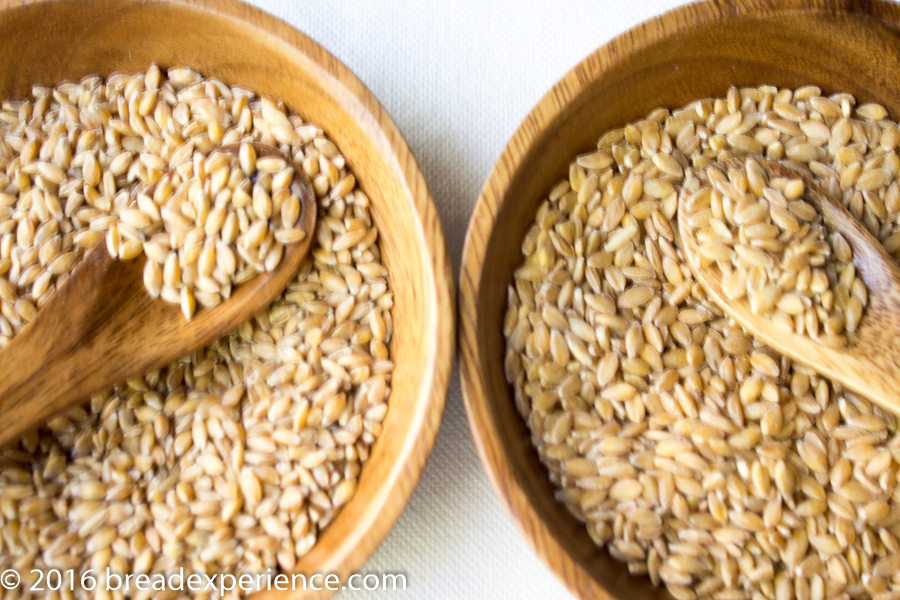
Einkorn.com grains on the left, Jovial Foods’ grains on the right
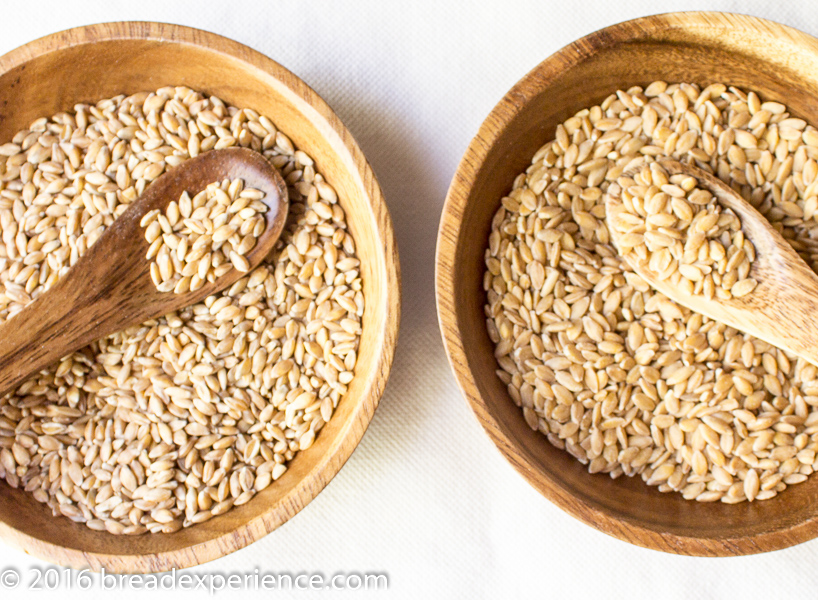
Einkorn.com grains on the left; Azure Farms grains on the right
Comparison of the Milled Flour
The whole grain flour milled from each of these grains looks (see photos below) and feels fairly similar; however, the baking properties are a little bit different between each of the grains. I found that the Einkorn.com flour required more hydration when mixing than the other two grains, but seemed to become wetter after it fermented for a while. The other two grains didn’t seem to soak up the water as quickly.
On the stickiness scale, Einkorn.com was in the middle with Jovial Foods’ einkorn being less sticky and Azure Farms being a little more sticky.
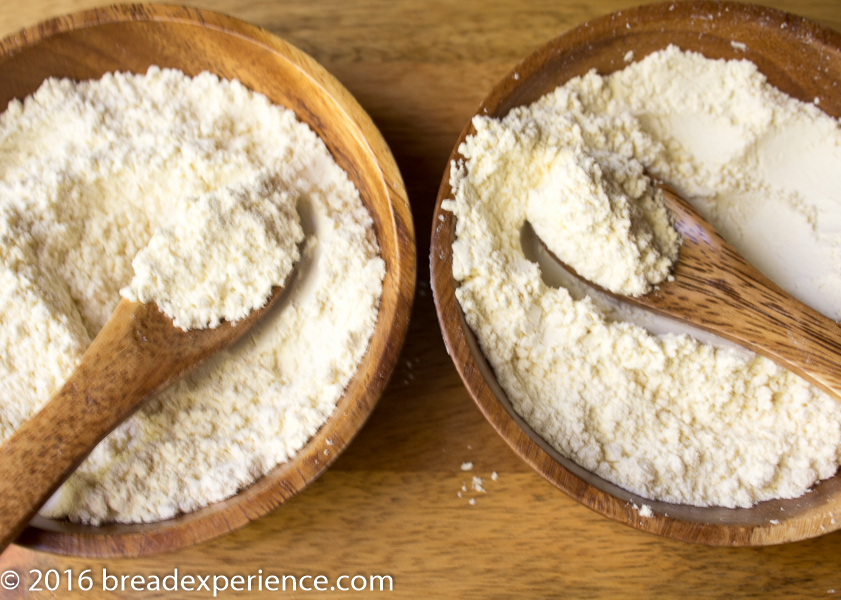
Flour milled from Einkorn.com grains on left; Jovial Foods on the right
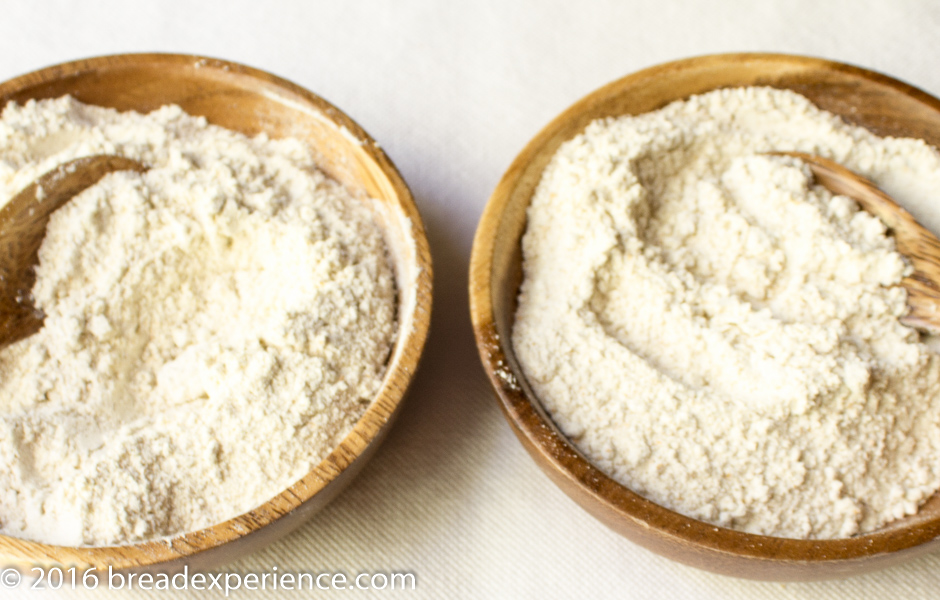
Flour milled from Einkorn.com grains on left; Azure Farms on the right
Comparing the Sourdough Loaves
For some of the tests, I made sourdough bread using grains from Einkorn.com and Azure Farms. For other comparisons, I made the loaves using grains from Einkorn.com and Jovial Foods. I started out making the loaves in loaf pans to keep them uniform, but towards the end of the testing, I got tired of baking loaves in loaf pans, so for a couple of the bakes, I made freeform loaves. For the freeform loaves, I used the same dough but proofed the loaves in banneton baskets and baked them on a baking steel instead of in loaf pans.
For the loaves baked in loaf pans, I used the same levain, let them bulk-proof for the same amount of time, and cold ferment in ceramic loaf pans in the refrigerator overnight for the same length of time.
You’ll notice (in the photos below) that the Einkorn.com loaf has a little more airiness to the crumb and the Azure Farms loaf has a tighter crumb. Typically, for this type of loaf, I prefer a tighter crumb. So although I let the loaves ferment for the same amount of time for comparison sake, for future reference, I think the Einkorn.com dough could use a little bit longer fermentation and less hydration to develop the crumb structure.
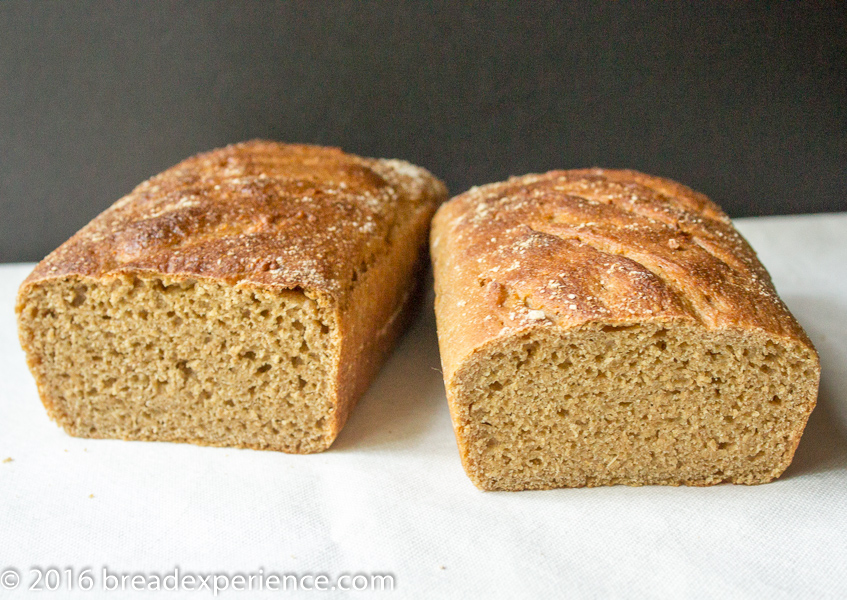
Einkorn.com loaf on left; Azure Farms loaf on the right; baked in ceramic loaf pans
The Einkorn.com flour tends to soak up more hydration during mixing, but then get wetter during the bulk ferment. So instead of adding more water during mixing, I think it would be good to start with a little drier dough and adjust the hydration after it’s bulk fermented for a while. This is a technique I learned at the Kneading Conference in Washington this past summer during a session on working with wholegrain dough. As she was kneading the dough, the instructor mentioned that “higher hydration is not always the way to go.” In this case, I believe she could be right.
Making Sourdough Einkorn Loaves into Batard-Shaped Loaves
Although I began the comparisons by baking the loaves in loaf pans to try and keep the loaves uniform, I decided to vary from that experiment to show that this bread could also be baked freeform.
When I made the freeform loaves, I used Einkorn.com grains and Jovial Foods’ grains. I milled the flour myself, started the levains at the same time, let them bulk proof for the same amount of time, and cold ferment in similar-shaped baskets for the same amount of time, etc. The one variable that I did change is that I baked them separately. I had tried to bake them together on one of my attempts but the baking steel was not big enough and one of the loaves spilled over the side. Needless to say, that experiment was a flop – literally.
The next time I made them, I let the baking steel warm up to what I thought was an adequate amount of time (my usual is 45 minutes to 1 hour) and I baked the Einkorn.com loaf first. Then, I let the oven get back up to temperature so it was good and hot by the time I baked the Jovial Foods loaf.
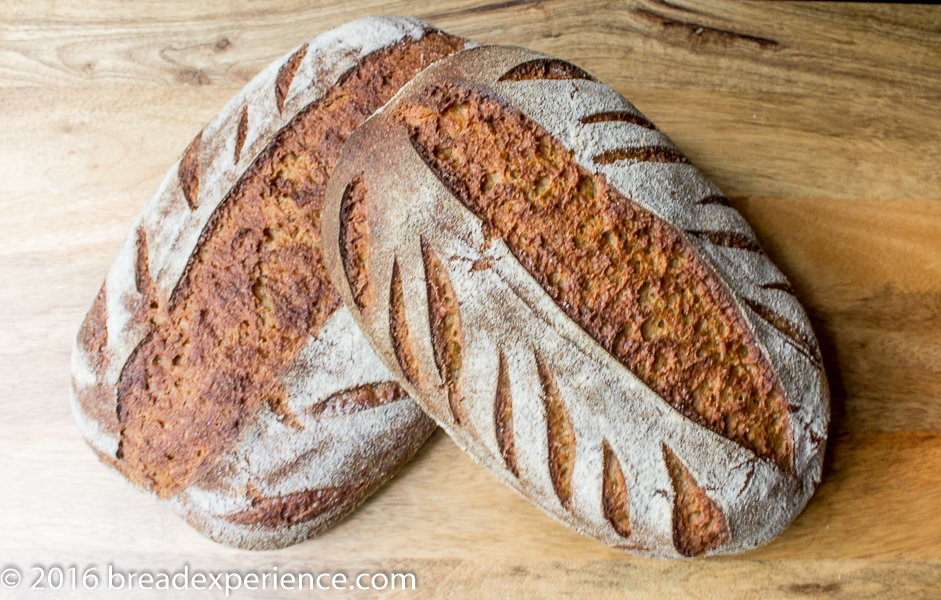
Einkorn.com loaf on left; Jovial Foods loaf on the right; baked free form on baking steel
If you look a the photos, you’ll notice that the loaf on the right (Jovial Foods) had better oven spring. The Einkorn.com dough was a little stickier to work with and had a bit less structure than the Jovial Foods loaf during the bulk fermentation so I cold fermented (placed them in the refrigerator) overnight. The next day, both loaves had a similar shape and structure before going into the oven to bake. I think the reason the Einkorn.com loaf spread out instead of rising during the bake cycle was because I hadn’t let the oven and baking steel preheat long enough.
Regardless, I was pleased with both loaves. They have a similar taste and texture although the Einkorn.com loaf was more airy because it was a wetter dough.
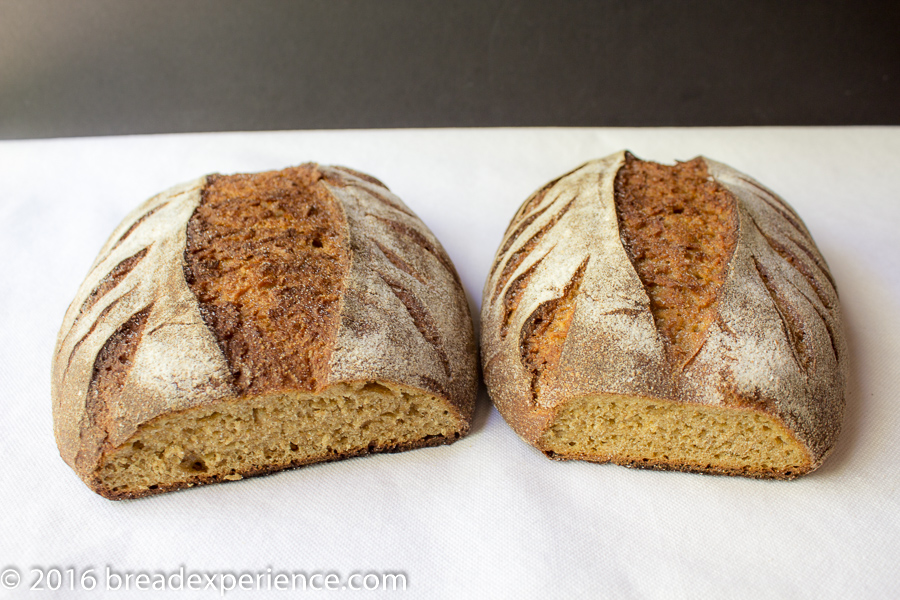
Einkorn.com loaf on left; Jovial Foods loaf on the right; baked free form on baking steel
Making sourdough Einkorn loaves with different varieties of Einkorn grains was a fun and informative experiment. I love the rich, nutty flavor of einkorn; however, due to its fragile proteins, it has been a bit tricky to work with. These tests have given me more insights into working with this ancient grain.
Although I found subtle differences between these three einkorn grains, as with any wheat, you can adjust for these differences by changing the hydration amount, shortening or lengthening the fermentation time, and learning how the dough feels in your hands.
I encourage you to experiment with it! Einkorn is a wonderful grain. It tastes great and is better for you than modern wheat so it’s worth the effort to learn how to bake with it.
Happy Baking!
Cathy
I want to thank the folks at Einkorn.com again for providing me with some of their grains to use in this experiment. I’m not done testing yet so stay tuned for more.
Leave a Reply